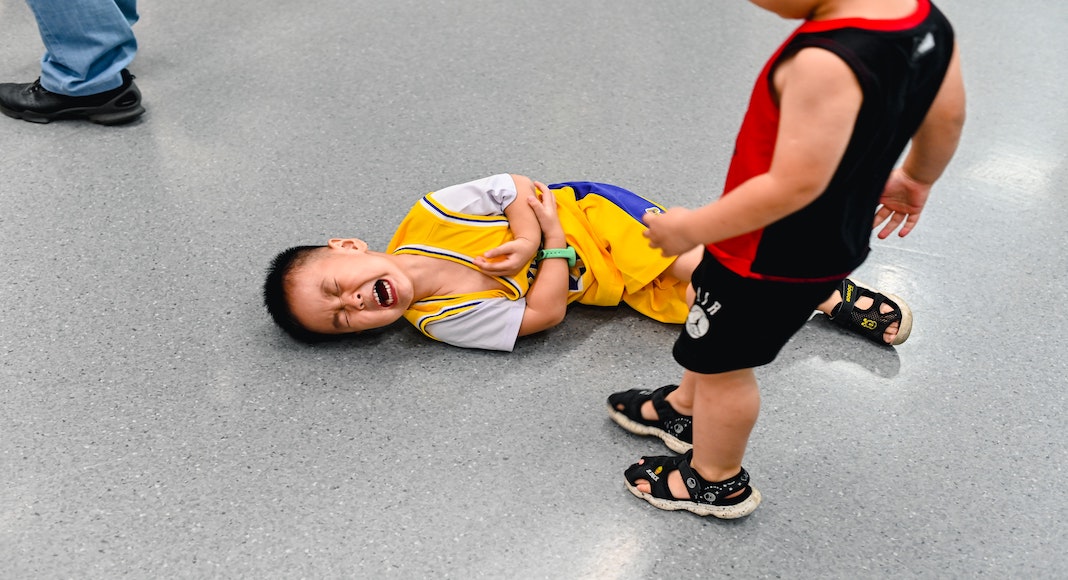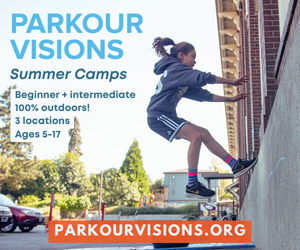Toddlers are busy. Their brains are doing so many amazing things, reaching significant milestones in their development and learning something new in basically a new body every day.
And, sometimes, that development can make life feel hard – for them and for you. (Enter mood swings and temper tantrums.)
One of the hardest things they are working on is how to experience, name, and work through different emotions, especially hard ones like anger, frustration, fear, and sadness.
If you have ever been around a toddler, you know that these emotions can be intense and hit you like a sneaker wave.
“I don’t get it. We were just laughing and having fun — what happened?”
The next thing you know, they are rage-crying at you throwing their book across the floor while stomping their feet.
While your immediate reaction may be to run or get angry and defensive — we have all been there — it’s important to remind yourself this is a good thing. I know, I know. Stay with me here!
 This is an invitation. An invitation for you and them to explore emotional regulation and processing.
This is an invitation. An invitation for you and them to explore emotional regulation and processing.
Sure, there are times when a tantrum has blown way past the space for processing or regulation. They just have to scream-cry through it while you stay close and keep them safe — but don’t look at them as that only makes it worse — and move forward when it’s over.
But the vast majority of these reactions are ripe opportunities to help them understand what they are feeling, why, and how to move through it.
One essential tool in your toolbox is using a designated feelings space, often referred to as a calm-down or feelings corner.
The feelings corner is a place in the house stocked explicitly with tools and supports to help your little one move through and regulate their feelings.
It’s a place you can invite your child to spend time in when they are getting angry or upset, throw a toy, or hit you. You can have them take some space there when it feels like no matter what you say or do, they get mad or sad and just need time to themselves.
What’s in a feelings corner?
- Something comfortable and soft to sit on. We have a few sitting cushions and a locally-made meditation pillow called a zafu.
- A couple of stuffed animals or friends they can hug or sit with. We have a giant IKEA panda because she loves pandas, and then we got a dragon to go along with the book Roaring Mad Riley, which is an excellent book for talking about frustration.
- A few books on feelings. I recommend a few picture or board books that are easy for them to flip through on their own like Little Monkey Calms Down. And then add in some books you can read and explore together, including some of our favorites — th
 e Little Spot books, Grumpy Monkey, Roaring Mad Riley, and Color Monster: A Pop-Up Book of Feelings.
e Little Spot books, Grumpy Monkey, Roaring Mad Riley, and Color Monster: A Pop-Up Book of Feelings. - Some self-soothing tools and trinkets. Some of our favorites include a Tibetan sound bowl, elastic pull bands, a liquid motion bubbler, a pinwheel, lavender-scented sensory rice, and a quirky stress ball. Our friend also sent her a constellation lamp she can turn on to watch the stars if she just needs to lie down for a bit.
- Visual aids such as mindfulness breathing posters and emotions charts that can be hung on the walls in the area and used as references for you and them.
How do we get them there?
This can be tricky as sometimes the moment for rational thought or persuasion passes them by much quicker than anticipated. I recommend parents and caregivers explore the corner with their little ones during low-stress and activation times. Check it out and spend time there exploring the different tools or reading some books when they are calm. Talk about how cozy it feels and brainstorm times when this might be a nice place to be. Ask them if they ever feel sad, mad, or frustrated, and then help them know this corner is a great place to be when they feel this way so they can feel safe and allow their mind and body to work through and past the feeling.
I also like to talk with them about yellow flag zones with emotions. How do we know we are starting to get frustrated? What does it feel like? What messages does our body send us? Share with them your own experience in this as well. This can be hard for them to do when you first introduce the idea, so we role-play it by pretending to play blocks. I felt myself get frustrated when my tower fell, talked through what was happening in my body and practiced taking a break in the feelings corner.
When they get stressed or upset, the goal is to go to the corner on their own. But remember, that may not be reasonable initially; they will likely still need some encouragement. Try saying something like, “I can see you are angry about ‘X’. Anger is a great emotion to explore in the feelings corner. Why don’t you head over there and grab (insert something in the corner they might like — in our case, it’s always a stuffed animal).”
You could also try, “This is a really big feeling. Big feelings can be hard. My job is to make sure you are safe while you feel this way. Let’s go to your feelings corner so we can do that.”
What do you do after they go there?
While our responses are often situational and context-driven, the key points are:
- Celebrate their use of the feelings corner with phrases such as, “That’s awesome the way you went to your feelings corner and took space to work through that feeling.”
- Acknowledge the emotion and talk through the feeling. We want to help put words to their experience to make it easier to recognize it next time. You can use words like, “Help me understand what you were feeling?” and “What do you think made you feel ‘X’?” You can also ask them how it felt in their body to give them more of that body awareness around emotions.

- Address any behaviors that were not safe or kind and talk through other options when this emotion shows up in the future. For example, if they started throwing a toy when they got frustrated before heading to the feelings corner, you could say something like, “What an awesome job taking space in the feelings corner. I noticed that when you got frustrated, you threw your toys. I completely understand that feeling and it’s important we don’t do anything that makes you or anyone else unsafe when that happens. Maybe, instead of throwing our toys, we could try pulling on our elastic bands or squeezing your stress ball really hard.”
At the end of the day, this tool may work incredibly well for some kids and not for others. No matter who your kid is, it definitely will not work every time and will require buy-in and consistency from you for it to take off. Remember, the easier thing is to pacify the emotion or walk away — which we all have to do from time to time. And, the more we can reframe this experience to see it as an invitation to help them learn what most of us still don’t know how to do — feel, name and move though an emotion — it helps us come down from that state of reactivity and feel more excited to engage in these albeit hostile situations.


















